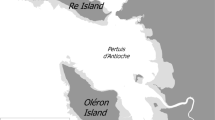Abstract
Biodiversity on floodplains is under increasing pressure as demand for water for human needs expands. Understanding how waterbirds respond to river flows feeding floodplain wetlands is critical for successful management. We analysed data on breeding by colonial breeding large waders—Eastern Great Egret Ardea modesta, Intermediate Egret Ardea intermedia, Little Egret Egretta garzetta, Nankeen Night Heron Nycticorax caledonicus, Australian White Ibis Threskiornis molucca, Glossy Ibis Plegadis falcinellus, Straw-necked Ibis Threskiornis spinicollis, and Royal Spoonbill Platalea regia—in response to river flow for three wetlands in the Murray-Darling Basin, Australia. Each wetland, which included Barmah-Millewa, the Macquarie Marshes, and Lake Merreti, has a distinctive geomorphology and hydrology. There were clear consistent thresholds of flow producing a >0.7 probability of attempted breeding by most species when a daily flow threshold was exceeded for 30–50 days. Flow characteristics were highly correlated and thresholds could also be expressed in terms of the total flow volume July–December and peak flow in September or October. Below thresholds, there was zero probability of breeding for most species. These minimum thresholds provide critical information for management of these wetlands. Our approach provides an analytical framework for estimating thresholds for other floodplains.





Similar content being viewed by others
References
Anon (2006) Barmah-Millewa hydrodynamic model—additional investigations. Consultant report to Goulburn Broken Catchment Management Authority, Shepparton, Victoria. WaterTechnology Pty Ltd
Arthur AD (2011) Using an age-structured population model to define management requirements for conservation of egrets in the Murray-Darling Basin, Australia. Emu 111:191–196
Braithwaite LW (1975) Managing waterfowl in Australia. Proceedings of the Ecological Society of Australia 8:107–128
Briggs SV, Thornton SA (1999) Management of water regimes in River Red Gum Eucalyptus camaldulensis wetlands for waterbird breeding. Australian Zoologist 31:187–197
Burnham KP, Anderson DR (2002) Model selection and multimodel inference: a practical information theoretic approach, 2nd edn. Springer Science + Business Media, LLC, New York
Carrick R (1962) Breeding, movements and conservation of Ibises (Threskiornithidae) in Australia. CSIRO Wildlife Research 7:71–88
CSIRO (2008) Water availability in the Murray-Darling Basin. A report to the Australian Government from the CSIRO Murray-Darling Basin Sustainable Yields Project. CSIRO, Australia, p 67
Kingsford RT (2000) Ecological impacts of dams, water diversions and river management on floodplain wetlands in Australia. Austral Ecology 25:109–127
Kingsford RT, Auld KM (2005) Waterbird breeding and environmental flow management in the Macquarie Marshes, arid Australia. River Research and Applications 21:187–200
Kingsford RT, Johnson W (1998) Impact of water diversions on colonially-nesting waterbirds in the Macquarie Marshes of arid Australia. Colonial Waterbirds 21:159–170
Kingsford RT, Norman FI (2002) Australian waterbirds—products of the continent’s ecology. Emu 102:47–69
Kingsford R, Thomas R (1995) The Macquarie Marshes in Arid Australia and their waterbirds: a 50-year history of decline. Environmental Management 19:867–878
Kingsford RT, Thomas RF (2004) Destruction of wetlands and waterbird populations by dams and irrigation on the Murrumbidgee River in arid Australia. Environmental Management 34:383–396
Kingsford RT, Lemly AD, Thompson JR (2006) Impacts of dams, river management and diversions on desert rivers. In: Kingsford RT (ed) Ecology of desert rivers. Cambridge University Press, Cambridge, pp 203–247
Lemly AD, Kingsford RT, Thompson JR (2000) Irrigated agriculture and wildlife conservation: conflict on a global scale. Environmental Management 25:485–512
Leslie DJ (2001) Effect of river management on colonially-nesting waterbirds in the Barmah-Millewa forest, south-eastern Australia. Regulated Rivers: Research & Management 17:21–36
Marchant S, Higgins PJ (1990) Handbook of Australian, New Zealand and Antarctic birds, vol 1, Ratites to ducks. Oxford University Press, Melbourne
McKilligan NG (1975) Breeding and movements of Straw-necked Ibis in Australia. Emu 75:199–212
McKilligan N (2005) Herons, egrets and bitterns. Their biology and conservation in Australia. CSIRO Publishing, Collingwood
Nilsson C, Reidy CA, Dynesius M, Revenga C (2005) Fragmentation and flow regulation of the world’s large river systems. Science 308:405–408
Poff NL, Zimmerman JKH (2010) Ecological responses to altered flow regimes: a literature review to inform the science and management of environmental flows. Freshwater Biology 55:194–205
Poff NL, Allan JD, Palmer MA, Hart DD, Richter BD, Arthington AH, Rogers KH, Meyers JL, Stanford JA (2003) River flows and water wars: emerging science for environmental decision making. Frontiers in Ecology and the Environment 1:298–306
R Development Core Team (2007) R: a language and environment for statistical computing. R Foundation for Statistical Computing, Vienna
Roberts J, Campbell B, Erdmann B, Harper M, Herbert T, Jolly I, Meredith S, Scholz O, Reid J and Jenkins K (2003) Ecological Habitat Condition assessment for Zone E, downstream of Lock 11 to upstream side of Lock 3. Living Murray project, Murray-Darling Basin Commission, Canberra
Thomas A, O’Hara B, Ligges U, Sturtz S (2006) Making BUGS Open. R News 6:12–17
Thomas RF, Kingsford RT, Yi L, Hunter SJ (2011) Landsat mapping of inundation (1979–2006) of the Macquarie Marshes in semi-arid Australia. International Journal of Remote Sensing 32:4545–4569
Vörösmarty CJ, McIntyre PB, Gessner MO, Dudgeon D, Prusevich A, Green P, Glidden S, Bunn SE, Sullivan CA, Liermann CR, Davies PM (2010) Global threats to human water security and river biodiversity. Nature 467:555–561
Acknowledgments
This study was funded by the National Water Commission and CSIRO. It relied in part on data collected in other published studies indicated in the text.
Author information
Authors and Affiliations
Corresponding author
Rights and permissions
About this article
Cite this article
Arthur, A.D., Reid, J.R.W., Kingsford, R.T. et al. Breeding Flow Thresholds of Colonial Breeding Waterbirds in the Murray-Darling Basin, Australia. Wetlands 32, 257–265 (2012). https://doi.org/10.1007/s13157-011-0235-y
Received:
Accepted:
Published:
Issue Date:
DOI: https://doi.org/10.1007/s13157-011-0235-y




